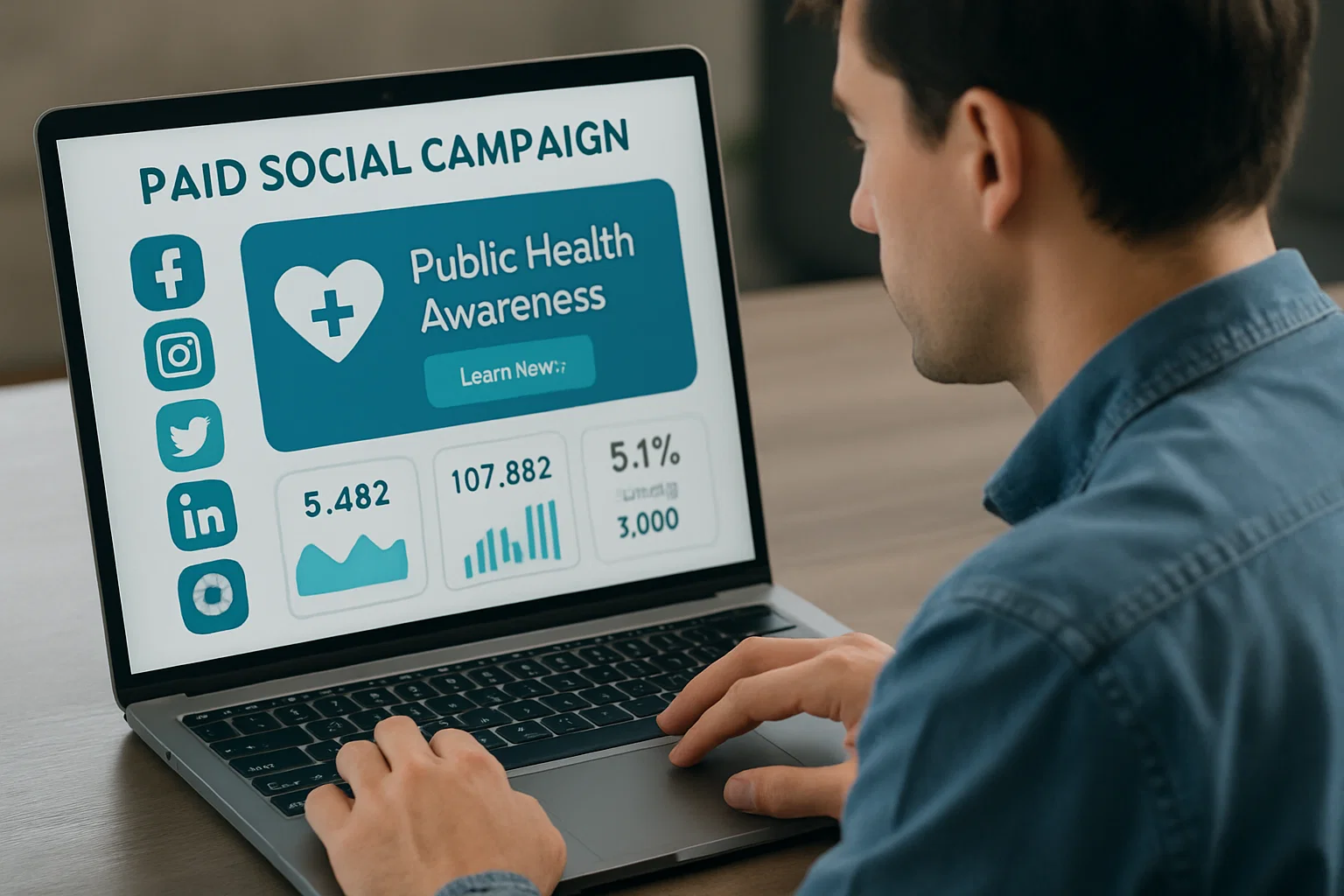The marketing team at Regional Medical Center had just completed their most successful campaign ever—a multi-channel effort promoting their new cardiac center that exceeded patient acquisition goals by 40%. They were celebrating when the CEO called an emergency meeting.
“Why,” he asked, visibly frustrated, “did I learn about our cardiac campaign from a board member who saw a billboard, rather than from my own marketing team? And why are physicians calling me confused about messaging they’re hearing from patients that contradicts what they were told in medical staff meetings?”
Despite external success, the campaign had created internal chaos. The marketing team had failed to communicate with key stakeholders, creating confusion, eroding trust, and undermining what should have been a triumph.
This scenario plays out constantly in health systems. Marketing teams focus intensely on external audiences—patients, community, media—while neglecting their most critical audience: internal stakeholders. The result is misalignment, resistance, missed opportunities, and frustrated colleagues who should be marketing’s biggest advocates.
Effective internal communication isn’t just courtesy—it’s strategic imperative. When internal stakeholders understand, support, and actively participate in marketing efforts, external campaigns become exponentially more effective. When they’re confused, surprised, or opposed, even brilliant external marketing fails.
According to Gallup research, organizations with highly engaged employees (which requires effective internal communication) achieve 23% higher profitability, 18% higher productivity, and 10% higher customer ratings than those with disengaged workforces.
This comprehensive guide explores how health system marketing teams can build internal communication strategies that align stakeholders, amplify campaigns, build trust, and ultimately make external marketing more successful.
Understanding Your Internal Audiences
Effective internal communication begins with understanding who needs what information, when, and why.
Primary Internal Stakeholders
Executive leadership:
Needs: Strategic context, competitive positioning, ROI, risk management, alignment with organizational goals
Frequency: Regular updates (monthly), plus real-time for significant developments
Format: Concise executive summaries, dashboards, presentations
Why they matter: Budget approval, strategic direction, external representation
Board of directors:
Needs: High-level strategy, major initiatives, community impact, financial performance
Frequency: Quarterly formal reports, annual comprehensive review
Format: Board presentations, written reports, metrics dashboards
Why they matter: Governance, strategic oversight, community ambassadors
Physicians and providers:
Needs: Patient impact, clinical relevance, how marketing supports their practice, changes affecting their workflow
Frequency: Regular updates (monthly), immediate for changes affecting them
Format: Medical staff meetings, email bulletins, one-on-one meetings
Why they matter: Patient trust, referrals, clinical credibility, internal influence
Department leaders and managers:
Needs: Departmental relevance, collaboration opportunities, resource allocation, timeline expectations
Frequency: Regular coordination (bi-weekly/monthly)
Format: Cross-functional meetings, email updates, shared project plans
Why they matter: Collaboration, resource sharing, operational alignment
Front-line staff:
Needs: Practical information, patient questions they’ll face, how to support campaigns, recognition
Frequency: Before campaigns launch and during execution
Format: Staff meetings, email, posters, intranet, quick reference guides
Why they matter: Patient interactions, brand delivery, morale and engagement
Human resources:
Needs: Employer brand alignment, recruitment marketing coordination, internal communications partnership
Frequency: Regular partnership meetings
Format: Collaborative planning sessions
Why they matter: Employee recruitment and retention, internal culture
IT department:
Needs: Technical requirements, data needs, system integration, security compliance
Frequency: Project-based and ongoing support
Format: Technical requirements documents, project meetings
Why they matter: Technology enablement, data access, security compliance
Foundation and development:
Needs: Donor messaging alignment, campaign coordination, success stories
Frequency: Regular coordination meetings
Format: Joint planning sessions, shared calendars
Why they matter: Fundraising alignment, consistent messaging, donor relationships
Marketing team members:
Needs: Strategic context, project status, priorities, resources, recognition
Frequency: Daily/weekly depending on role
Format: Team meetings, project management tools, one-on-ones
Why they matter: Execution, innovation, morale, retention
Tailoring Communication by Audience
One-size-fits-all communication fails. Customize by:
Information depth: Executives need summaries; physicians need clinical relevance; front-line staff need practical instructions
Communication style: Formal presentations for board; conversational emails for staff; data-driven reports for analysts
Timing: Advance notice for strategic changes; real-time updates for operational issues
Channel preferences: Respect how different groups consume information (physicians prefer brief emails; staff respond to visual posters)
Strategy 1: Building a Communication Framework
Systematic communication prevents ad-hoc chaos.
Communication Calendar and Planning
Annual communication plan:
Major campaigns and initiatives mapped for the year
Key stakeholder touchpoints scheduled
Recurring communication vehicles identified
Alignment with organizational calendar (budget cycles, board meetings, etc.)
Campaign communication timeline:
6-8 weeks before launch:
Brief executive leadership on strategy and goals
Present to relevant clinical leaders
Coordinate with affected departments
4 weeks before launch:
Inform all staff about upcoming campaign
Train front-line staff on patient questions
Prepare FAQs and talking points
2 weeks before launch:
Final reminders to key stakeholders
Distribute staff resources
Ensure all materials ready
Launch week:
Day-of notification to entire organization
Real-time updates on early performance
Address any issues immediately
During campaign:
Weekly performance updates to leadership
Recognition for staff contributions
Course corrections as needed
Post-campaign:
Results sharing with all stakeholders
Thank you and recognition
Lessons learned documentation
Standing Communication Vehicles
Weekly marketing team meetings:
Project status updates
Priority alignment
Problem-solving
Quick decision-making
Monthly stakeholder updates:
Newsletter to key stakeholders
Dashboard of marketing performance
Upcoming initiatives preview
Success stories and wins
Quarterly executive briefings:
Strategic performance review
Market intelligence sharing
Major initiatives preview
Budget and resource discussions
Quarterly cross-functional meetings:
Marketing, operations, clinical, IT, HR
Collaborative planning
Issue resolution
Relationship building
Annual comprehensive report:
Year in review
ROI and impact analysis
Strategic recommendations
Next year preview
Communication Templates and Resources
Campaign briefs (1-2 pages):
Campaign objective and goals
Target audience
Key messages
Timeline and tactics
Stakeholder roles
Success metrics
Executive summaries (1 page):
Situation overview
Recommendation or update
Supporting rationale
Impact and implications
Next steps
Staff talking points:
Campaign overview in simple language
Key messages to share with patients
Common questions and answers
How staff can support
Who to contact with questions
Performance dashboards:
Visual representation of KPIs
Trend lines and comparisons
Status indicators (green/yellow/red)
Brief commentary on insights
According to McKinsey research, organizations with structured internal communication frameworks report 25% higher project success rates and 30% faster decision-making than those with ad-hoc approaches.
Strategy 2: Physician and Provider Engagement
Physicians are uniquely influential but often disconnected from marketing.
Understanding Physician Perspective
Why physicians resist marketing:
View it as superficial or manipulative
Skeptical of advertising medicine
Concerned about accuracy of clinical claims
Busy with patient care, limited time for “non-clinical” matters
Prefer evidence-based communication to marketing language
Why physician engagement matters:
Patients trust physician recommendations above all else
Physicians influence colleagues and make referrals
Clinical credibility essential for healthcare marketing
Physicians are powerful internal advocates (or opponents)
Their stories make compelling content
Physician Communication Best Practices
Speak their language:
Lead with clinical evidence and patient outcomes
Use data and research, not marketing hype
Respect scientific rigor and accuracy
Acknowledge limitations honestly
Respect their time:
Brief, focused communications (one page or less)
Bullet points, not paragraphs
Meeting agendas sent in advance
Optional deep dives for interested physicians
Demonstrate value:
Show how marketing helps their practice grow
Quantify patient volume increases
Highlight community health impact
Recognize their contributions publicly
Involve them early:
Consult on clinical accuracy before launching
Seek input on patient messaging
Invite participation in campaign development
Create physician advisory groups for major initiatives
Make participation easy:
Provide written content they can approve (not write)
Handle logistics and details
Offer multiple participation options
Record presentations for those who can’t attend
Recognize and reward:
Public acknowledgment of contributions
Share success metrics showing impact
Thank you notes and recognition
Consider CME credit for educational content participation
Physician Communication Tactics
Medical staff meeting presentations:
Brief update on marketing initiatives
Patient volume data by specialty
New capabilities or services to promote
Recognition of physician champions
Monthly physician email update:
Marketing activities overview
Patient acquisition data
Media coverage featuring physicians
Opportunities to participate
One-on-one meetings:
Meet individually with key opinion leaders
Understand their priorities and concerns
Build relationships and trust
Personalized communication approach
Physician advisory councils:
Regular meetings with representative physicians
Input on marketing strategy
Review major campaigns
Problem-solving and collaboration
Clinical content review process:
Formal physician review of clinical claims
Timeline expectations clear
Easy approval process
Recognition of their expertise
Strategy 3: Front-Line Staff Empowerment
Staff interactions with patients often determine whether marketing succeeds or fails.
Why Front-Line Staff Matter
They’re the face of your brand:
First and last impression (registration and checkout)
More patient contact time than physicians
Set tone for patient experience
Answer patient questions about services
They can amplify or undermine marketing:
Confused staff create patient confusion
Uninformed staff miss referral opportunities
Disengaged staff contradict marketing messages
Empowered staff become brand ambassadors
They have valuable insights:
Hear patient questions and concerns firsthand
Notice operational barriers to patient satisfaction
Understand competitor activities through patient comments
Identify opportunities marketing might miss
Staff Communication Best Practices
Communicate before patients know:
Staff should never learn about campaigns from patients
Advance notice builds confidence
Shows respect for their role
Prevents embarrassment and confusion
Make information accessible and actionable:
One-page overviews, not lengthy documents
Visual aids (posters, reference cards)
Talking points for patient questions
Clear contact for questions
Explain the “why”:
Help staff understand campaign goals
Show how marketing supports patient care
Connect to organizational mission
Create shared purpose
Provide tools and resources:
FAQ sheets for common patient questions
Quick reference guides at workstations
Digital resources on intranet
Laminated cards for phone scripts
Recognize and celebrate contributions:
Share patient compliments about staff
Recognize departments supporting campaigns
Include staff in success celebrations
Feature staff in internal communications
Staff Communication Tactics
Pre-campaign staff meetings:
Department-level presentations before launch
Interactive Q&A sessions
Practice handling patient questions
Distribute reference materials
Visual reminders at point of care:
Posters in break rooms and work areas
Computer desktop wallpapers
Badge holder quick reference cards
Workstation prompt cards
Staff-specific intranet section:
Campaign overviews and updates
Downloadable resources
Video explanations
Contact information for questions
Regular staff newsletters:
Marketing updates in employee newsletter
Patient success stories
Recognition of staff contributions
Upcoming initiatives preview
Department champion program:
Identify enthusiastic staff in each department
Provide additional training and resources
Empower them to support peers
Recognize their leadership
Strategy 4: Cross-Functional Collaboration
Marketing doesn’t operate in isolation—success requires partnership.
Building Strategic Partnerships
Operations:
Why it matters: Marketing drives volume that operations must handle
Collaboration needs: Capacity planning, patient flow, operational readiness for campaigns
Communication: Joint planning meetings, shared forecasts, real-time issue resolution
IT/Digital:
Why it matters: Technology enables marketing execution
Collaboration needs: Website updates, data integration, analytics, security compliance
Communication: Regular partnership meetings, project-based collaboration, technical requirements documents
Finance:
Why it matters: Budget approval, ROI validation, financial planning
Collaboration needs: Budget planning, performance reporting, business cases for investment
Communication: Quarterly financial reviews, ROI reports, budget justifications
Human Resources:
Why it matters: Employer brand, recruitment marketing, internal culture
Collaboration needs: Recruitment campaigns, culture initiatives, brand alignment
Communication: Monthly coordination meetings, shared campaigns, consistent messaging
Patient Experience:
Why it matters: Marketing promises must match care delivery
Collaboration needs: Satisfaction data, experience improvement, service recovery
Communication: Regular data sharing, joint improvement initiatives, patient feedback loops
Strategy/Planning:
Why it matters: Marketing alignment with organizational strategy
Collaboration needs: Market intelligence, strategic planning, competitive analysis
Communication: Strategic planning participation, market research sharing, environmental scanning
Cross-Functional Meeting Best Practices
Clear objectives and agendas:
Defined purpose for meetings
Agenda sent in advance
Time limits respected
Action items documented
Mutual value creation:
Not just marketing requesting help
Identify ways marketing supports partner goals
Shared wins and recognition
Reciprocal support
Regular rhythm:
Consistent meeting schedule
Not just when problems arise
Relationship building, not just transactions
Standing agenda items plus ad-hoc topics
Decision-making clarity:
Who decides what
Escalation paths for disagreements
Documentation of decisions
Follow-through accountability
Cultural bridge-building:
Understand partner priorities and pressures
Learn their language and perspectives
Build personal relationships
Create trust over time
Strategy 5: Crisis Communication and Issue Management
When things go wrong, internal communication becomes critical.
Types of Marketing-Related Crises
Campaign missteps:
Offensive or insensitive messaging
Factual errors or misleading claims
Brand guideline violations
Competitive issues
External criticism:
Negative media coverage
Social media backlash
Patient complaints going public
Regulatory concerns
Internal conflicts:
Physician opposition to campaign
Department resistance to marketing initiative
Budget or resource disputes
Strategic disagreements
Operational failures:
Website crashes during campaign launch
Appointment system failures
Staff unprepared for patient volume
Fulfillment issues (promised services unavailable)
Crisis Communication Protocol
Immediate response (within hours):
Acknowledge the issue internally
Brief executive leadership
Assess scope and severity
Activate response team
Communicate holding statement to key stakeholders
Short-term response (24-48 hours):
Investigate thoroughly
Develop response strategy
Communicate to all affected stakeholders
Address immediate impacts
Implement corrective actions
Ongoing response:
Regular updates to stakeholders
Monitor sentiment and feedback
Adjust strategy as needed
Document lessons learned
Prevent recurrence
Recovery and learning:
Comprehensive post-incident review
Share learnings across organization
Update processes and protocols
Rebuild trust through transparency
Recognize response team
Crisis Communication Best Practices
Be first to communicate:
Don’t let stakeholders learn from external sources
Proactive communication controls narrative
Demonstrates transparency and accountability
Be honest and transparent:
Acknowledge mistakes clearly
Don’t minimize or make excuses
Explain what happened and why
Share what you’re doing to fix it
Communicate frequently:
Regular updates even if no new information
“We’re still investigating” is valid update
Don’t go silent and create information vacuum
Show empathy and accountability:
Acknowledge impact on stakeholders
Take responsibility
Express commitment to doing better
Thank people for their patience and support
Document and learn:
Capture timeline and decisions
Identify what worked and what didn’t
Update crisis protocols
Share lessons learned
According to Harvard Business Review, organizations that communicate quickly and transparently during crises maintain 60% higher stakeholder trust than those that delay or deflect.
Strategy 6: Technology and Tools
Technology streamlines and enhances internal communication.
Internal Communication Platforms
Intranet/employee portal:
Purpose: Central hub for organizational communication
Marketing use: Campaign updates, resources, performance dashboards, recognition
Platforms: SharePoint, Workplace from Meta, Simpplr, Staffbase
Project management tools:
Purpose: Coordinate work, track progress, collaborate
Marketing use: Campaign planning, task management, timeline tracking, file sharing
Platforms: Asana, Monday.com, Smartsheet, Trello, Microsoft Project
Collaboration platforms:
Purpose: Real-time communication and file sharing
Marketing use: Team chat, quick questions, file collaboration, video meetings
Platforms: Slack, Microsoft Teams, Google Workspace
Email newsletters:
Purpose: Regular stakeholder updates
Marketing use: Monthly updates, campaign announcements, success stories
Platforms: Internal email, newsletter tools integrated with intranet
Digital signage:
Purpose: Visual communication in common areas
Marketing use: Campaign awareness, recognition, organizational updates
Platforms: ScreenCloud, Rise Vision, Yodeck
Survey and feedback tools:
Purpose: Gather stakeholder input and feedback
Marketing use: Campaign feedback, idea generation, satisfaction assessment
Platforms: SurveyMonkey, Qualtrics, Google Forms, Typeform
Measurement and Analytics
Communication effectiveness metrics:
Reach (how many received communication)
Engagement (opened, read, clicked)
Comprehension (understanding of key messages)
Action (desired behaviors taken)
Satisfaction (feedback on communication quality)
Stakeholder sentiment tracking:
Regular pulse surveys
Meeting feedback
Anecdotal feedback documentation
Net Promoter Score for internal stakeholders
Campaign awareness metrics:
Staff awareness of campaigns (pre- and post-launch surveys)
Physician awareness and support
Leadership satisfaction with communication
Operational impact metrics:
Reduction in confusion-related issues
Faster decision-making cycles
Improved cross-functional collaboration scores
Increased staff participation in initiatives
Strategy 7: Building a Communication Culture
Sustainable internal communication requires cultural change.
Marketing Team Communication Competencies
Required skills:
Clear, concise writing
Stakeholder mapping and analysis
Presentation and facilitation
Active listening
Political savvy and diplomacy
Cultural awareness and sensitivity
Training and development:
Communication skills workshops
Presentation training
Stakeholder management courses
Emotional intelligence development
Change management training
Role modeling from leadership:
CMO demonstrates excellent internal communication
Marketing leaders prioritize stakeholder relationships
Recognition for strong communicators
Communication included in performance evaluations
Creating Feedback Loops
Regular feedback mechanisms:
Quarterly stakeholder satisfaction surveys
Post-campaign feedback from partners
Anonymous suggestion box
Focus groups with different stakeholder types
Exit interviews with departing staff
Acting on feedback:
Acknowledge feedback received
Share themes and insights
Implement changes based on input
Close the loop by communicating improvements
Thank contributors
Continuous improvement mindset:
Regular review of communication effectiveness
Benchmark against best practices
Pilot new approaches
Learn from mistakes
Celebrate improvements
Recognition and Celebration
Recognize internal partners:
Thank departments supporting campaigns
Spotlight physician champions
Celebrate staff brand ambassadors
Recognize cross-functional collaboration
Share successes widely:
Campaign results shared with all contributors
Patient impact stories
Media coverage and recognition
Financial and operational wins
Create visibility for marketing:
Marketing team profiles in internal communications
Behind-the-scenes looks at campaign development
Humanize marketing team
Build understanding of marketing value
Conclusion: Internal Communication as Strategic Advantage
The most sophisticated external marketing campaign will fail if internal stakeholders are confused, uninformed, or opposed. Conversely, even modest external campaigns succeed spectacularly when backed by aligned, informed, enthusiastic internal advocates.
Internal communication isn’t overhead—it’s infrastructure for marketing success. It’s the difference between:
Resistance and advocacy: Informed stakeholders become champions; surprised stakeholders become critics.
Silos and synergy: Communication breaks down walls, enabling collaboration that amplifies impact.
Confusion and confidence: When everyone understands the strategy, execution becomes exponentially more effective.
Waste and efficiency: Clear communication prevents duplicated efforts, misaligned priorities, and rework.
Tactical and strategic: Good communication enables reactive execution; great communication builds proactive partnership.
The health systems with the most effective marketing aren’t necessarily those with the biggest budgets or flashiest campaigns—they’re those with the strongest internal communication creating organizational alignment, stakeholder engagement, and cultural support for marketing initiatives.
Building excellent internal communication requires:
Intentionality: Systematic planning and execution, not ad-hoc updates
Customization: Tailored messages and channels for different stakeholders
Consistency: Regular rhythms and reliable touchpoints
Transparency: Honest communication including challenges and mistakes
Partnership: True collaboration, not marketing dictating
Measurement: Tracking effectiveness and continuously improving
Culture: Long-term commitment to communication excellence
Your external audiences will never know your brand better than your internal stakeholders do. Your patients will never trust your marketing more than your staff does. Your community will never value your services more highly than your physicians advocate for them.
Internal communication isn’t separate from marketing strategy—it’s the foundation that determines whether marketing strategy succeeds or fails.
Invest in it. Prioritize it. Master it.
Your external marketing success depends on it.
References
- Gallup. (2024). “State of the Global Workplace: Employee Engagement and Communication.” Retrieved from https://www.gallup.com/
- McKinsey & Company. (2024). “Organizational Communication and Performance.” McKinsey Insights. Retrieved from https://www.mckinsey.com/
- Harvard Business Review. (2024). “Crisis Communication and Stakeholder Trust.” Retrieved from https://hbr.org/
- Society for Healthcare Strategy & Market Development (SHSMD). (2024). “Internal Communication Best Practices.” American Hospital Association.
- American College of Healthcare Executives (ACHE). (2024). “Leadership Communication in Healthcare.” ACHE Resources.
- Advisory Board. (2024). “Marketing and Physician Engagement Strategies.” Retrieved from https://www.advisory.com/
- Becker’s Hospital Review. (2024). “Healthcare Marketing and Internal Alignment.” Becker’s Healthcare.
- Healthcare Marketing Report. (2024). “Internal Stakeholder Communication Study.” Healthcare Success Strategies.
- Journal of Healthcare Management. (2024). “Organizational Communication and Marketing Effectiveness.” American College of Healthcare Executives.
- Internal Communication Hub. (2024). “Best Practices for Healthcare Organizations.” Gallagher Communications.
- Ragan Communications. (2024). “Employee Communication Benchmarks: Healthcare Edition.” Ragan Research.
- PR News. (2024). “Internal Communications Trends in Healthcare.” Access Intelligence.
- Institute for Healthcare Improvement (IHI). (2024). “Communication and Patient Safety.” IHI Resources.
- Modern Healthcare. (2024). “Marketing Leadership and Cross-Functional Collaboration.” Crain Communications.
- Healthcare Financial Management Association (HFMA). (2024). “Marketing ROI and Internal Alignment.” HFMA Resources.




